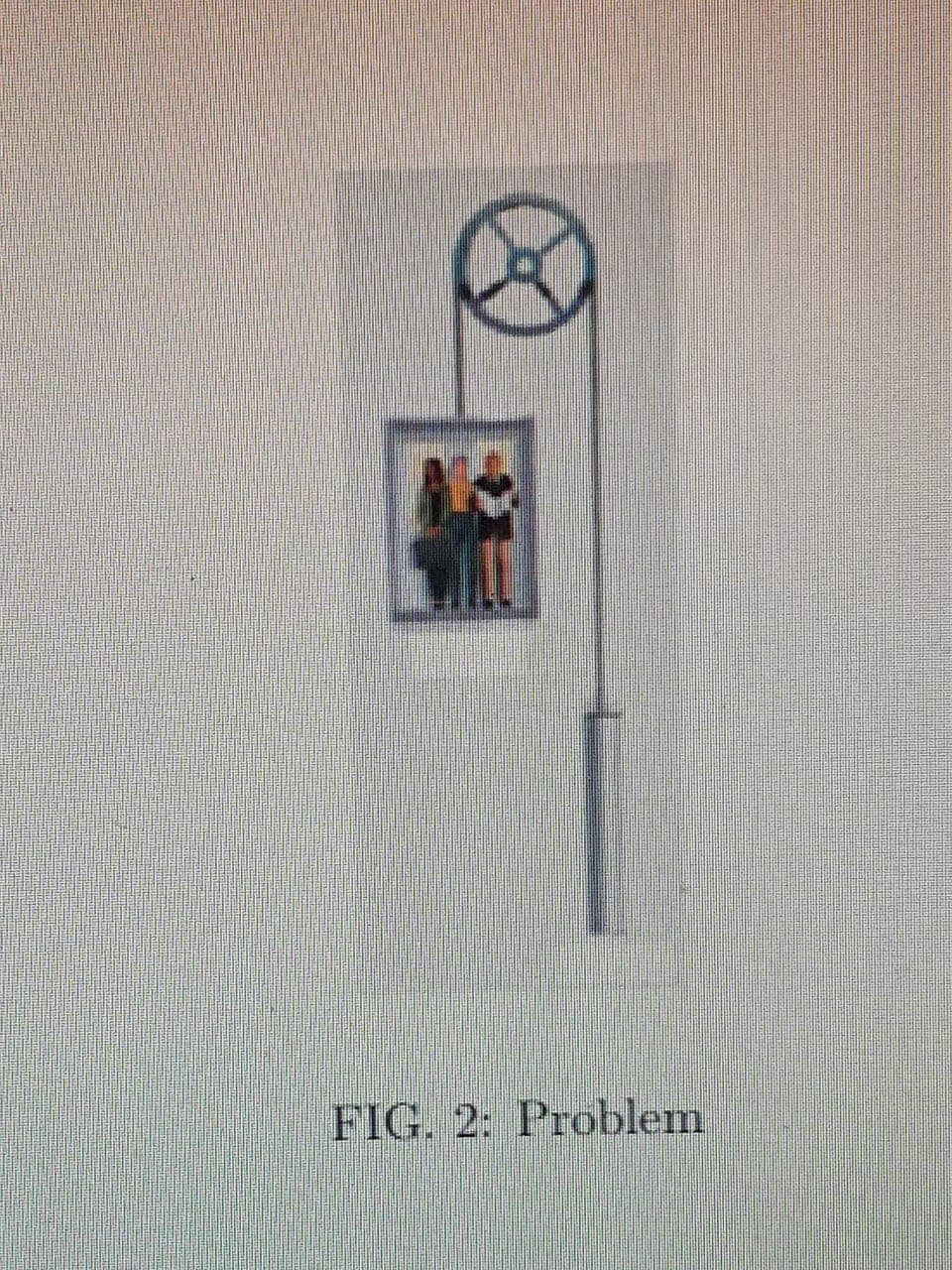An elevator consists of an elevator cage and a counterweight attached to the ends of a cable that runs over a pulley (see the Figure below). The mass of the cage (with its load) is 1000 kg, and the mass of the counterweight is 700 kg. The elevator is driven by an electric motor attached to the pulley. Suppose that the elevator is initially at rest on the first floor of the building and the motor makes the elevator accelerate upward at the rate of 1.5 m/s2 (a) What is the tension in the part of the cable attached to the elevator cage? What is the tension in the part of the cable attached to the counterweight? . (b) The acceleration lasts exactly 1.0 s. How much work has the electric motor done in this interval? Ignore friction forces and ignore the mass of the pulley. (c) After the acceleration interval of 1.0 s, the motor pulls the elevator upward at constant speed until it reaches the third floor, exactly 10.0 m above the rest floor. What is the total amount of work that the motor has done up to this point?
An elevator consists of an elevator cage and a counterweight attached to
the ends of a cable that runs over a pulley (see the Figure below). The mass of the cage (with
its load) is 1000 kg, and the mass of the counterweight is 700 kg. The elevator is driven by an
electric motor attached to the pulley. Suppose that the elevator is initially at rest on the first
floor of the building and the motor makes the elevator accelerate upward at the rate of 1.5 m/s2
(a) What is the tension in the part of the cable attached to the elevator cage? What is the
tension in the part of the cable attached to the counterweight?
.
(b) The acceleration lasts exactly 1.0 s. How much work has the electric motor done in this
interval? Ignore friction forces and ignore the mass of the pulley.
(c) After the acceleration interval of 1.0 s, the motor pulls the elevator upward at constant
speed until it reaches the third floor, exactly 10.0 m above the
rest floor. What is the total amount of work that the motor has done up to this point?

Trending now
This is a popular solution!
Step by step
Solved in 2 steps with 1 images
